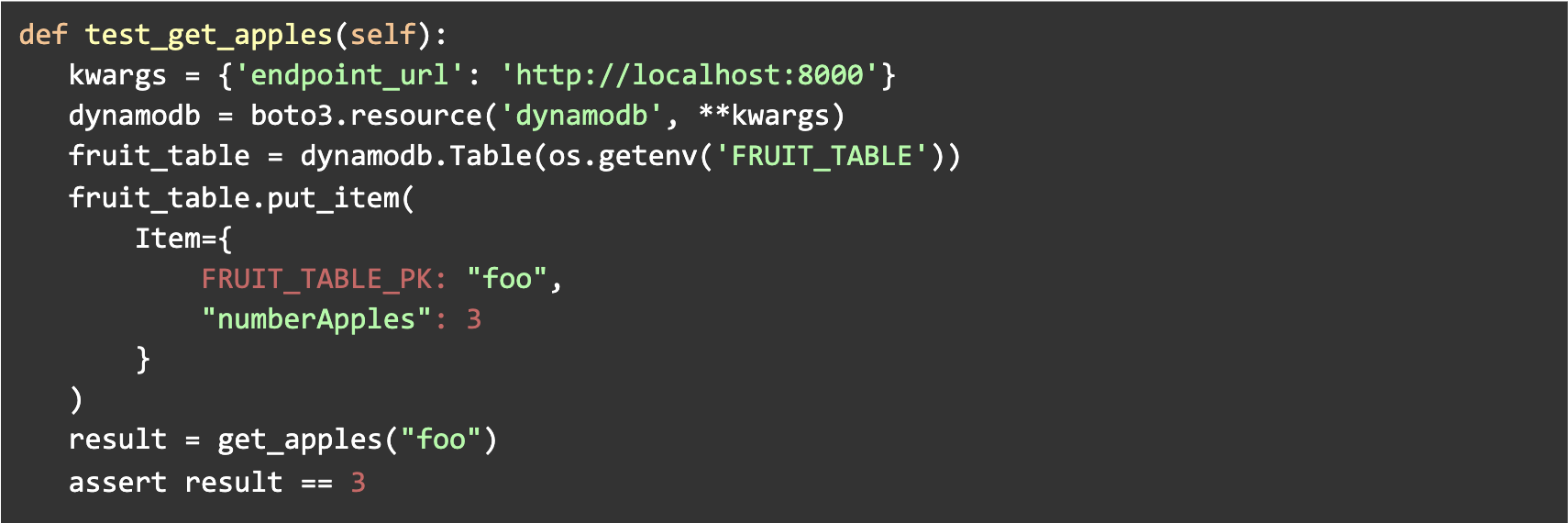

Let's create a class called DependencyModule and declare all our dependencies in it. In this article, we will use the ageless style of static factory methods for providing dependencies. I will go deeper into the details of DI and cover the use of Dagger in another article. Then there is Dagger, a pure DI only framework that injects dependencies during compile time! Its small size and compile time injection make it the perfect choice for implementing DI in Lambdas.

But just like Spring, it does the injection at runtime so it's not a good candidate for DI either. Guice is another nice dependency injection framework that is much lighter than Spring. But the Spring ecosystem is HUGE and you'll have to bring in a lot of its frameworks even if you just want to use the DI part.Īlso, the injection is done at runtime, making Lambda's cold start time even longer. When you hear about DI, Spring is probably the name that comes to mind.
#RUN LOCAL DYNAMODB CODE#
As a general best practice, all such dependencies in your code should be resolved using Dependency Injection (DI). We have added DynamoDbClient as a dependency in our PetStoreClient class. Note: A scan request goes through all the items in the table, so I don't recommend it for real world use cases. We will then use the DynamoDbClient to scan the table in DynamoDB and return a list of items. We will create a ScanRequest and specify the table name to be scanned. Reading a list of items in DynamoDB is a SCAN request. We will then use the DynamoDbClient to put this item in DynamoDB. We will create a PutItemRequest and specify the table name and the item attributes to be added. Write an ItemĪdding a single item in DynamoDB is a PUT request. We will now create two functions in the PetStoreClient class to read and write items from DynamoDB. Create a PetStoreClient class and add the dependency on DynamoDbClient.

We need to create a data access class to interact with Amazon DynamoDB and run our read/write queries. This will bring in the dependencies for AWS SDK for DynamoDB and Apache HTTP Client that we'll use to create a synchronous DynamoDB client. Since we will be using Amazon DynamoDB as our data store, let’s add the corresponding SDK dependencies in the pom.xml. We will start with simple attributes like name, age and category. Let’s create a Pet class now to contain the attributes for the pets.
#RUN LOCAL DYNAMODB UPDATE#
Let’s change the pom.xml to update the name of the module to PetStore and use Java 11 instead of Java 8. sam init -r java11 -d maven -app-template pet-store -n pet-storeįor more details about the parameters passed, please refer to the previous article. This will create a pet-store folder in your current directory. Run the sam-init command to create a new project.
#RUN LOCAL DYNAMODB INSTALL#
You can install and configure SAM by following the guidelines in the previous article here. We will be using AWS SAM for this tutorial. This application will have APIs for adding a new pet and fetching the list of available pets. This time, we will create a sample Pet Store application using Amazon API Gateway, AWS Lambda, and Amazon DynamoDB. In this article, I will walk you through the steps required to build and deploy a serverless application without having to create and setup an actual AWS account.

And it can lead to unwanted expenses as well (if you don't configure it properly). Setting up an AWS account and configuring a development environment can be time-consuming. These were quick fun projects that leveraged the power of serverless computing and allowed us to deploy a serverless application on AWS within a few minutes.īut many people are not able to completely leverage such tutorials if they don't have an AWS account. In my previous articles, I talked about building and deploying serverless applications on AWS using Chalice and SAM.


 0 kommentar(er)
0 kommentar(er)
